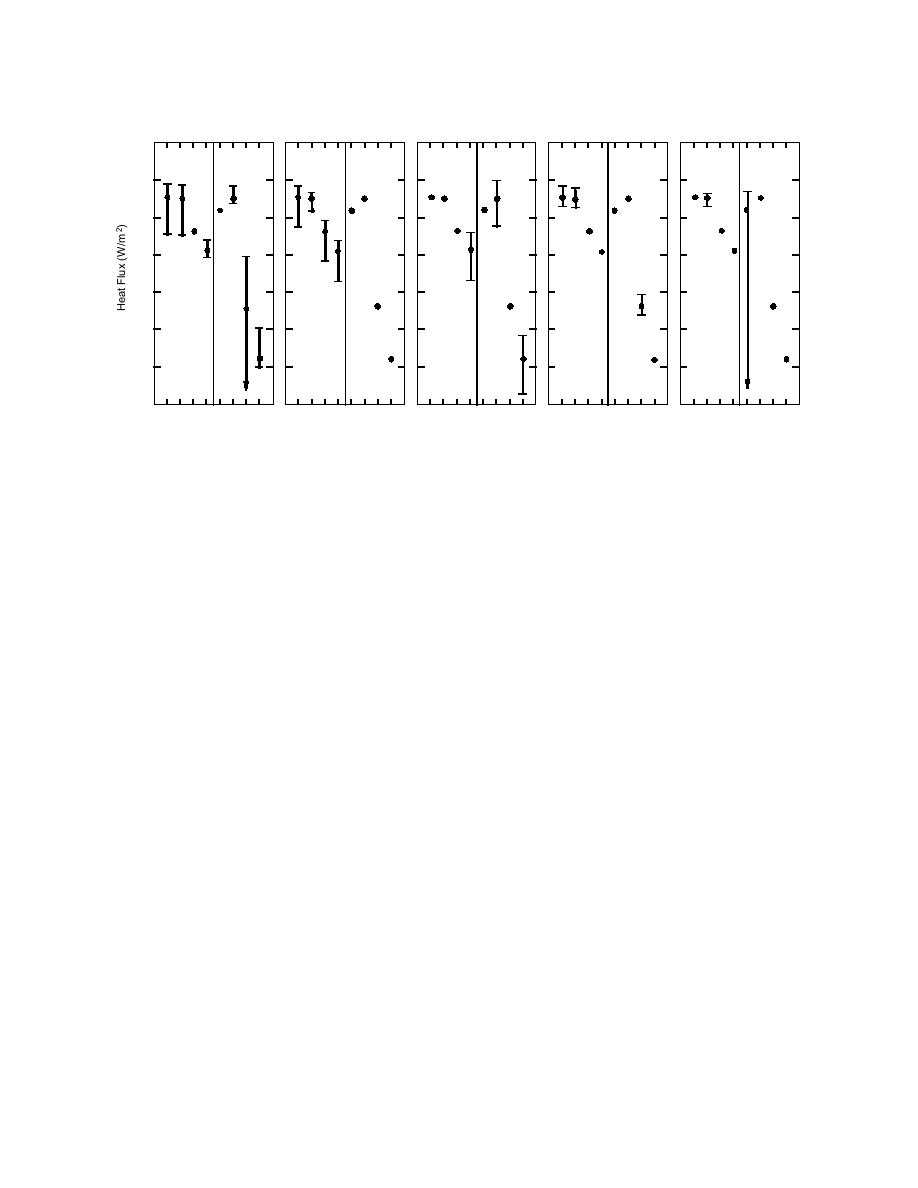
e. Relative Humidity
and Solar Radiation
a. Wind
b. Temperature
c. Precipitation
d. Diameter
c e lw sfvk
c elwsfv k
c elwsfv k
c e lw sfvk
c e lw sfvk
104
103
102
101
100
1
10
2
10
3
10
Cooling
Heating
Cooling
Heating
Cooling
Heating
Cooling
Heating
Cooling
Heating
Figure 3. Comparison of heat flux terms in typical freezing-rain conditions. Standard conditions (black symbols) for
the parameters are V = 3 m/s, T = 3C, P = 3 mm/hr, Rh = 0.90, Sr = 100 W/m2, Dc = 3 cm. In each plot one or two
of these parameters is varied about the standard conditions as follows: a) 0 < V < 10 m/s, b) 6 < T < 0.5C,
c) 0.5 < P < 10 mm/hr, d) 0.5 < Dc < 10 cm, e) 0.80 < Rh < 1.00 and 0 < Sr < 200 W/m2. Minimum convective and
evaporative fluxes in a) are provided by free convection. Key: e = evaporative cooling, c = convective cooling, l =
longwave cooling, w = cooling from warming water, s = shortwave solar heating, f = heat of fusion, v = viscous heating,
k = kinetic heating.
Prandtl number Pr of the flow. In free convection,
Cooling flux required to warm impinging
where there is no external velocity scale, NuL is
precipitation
In the heat-balance model, the latent heat of
given in terms of the Rayleigh number RaL, which
fusion given off by the fraction of precipitation
is the product of the Grashof and Prandtl numbers,
that freezes to the wire warms all the impinging
GrL and Pr. Relationships between NuL and these
precipitation to 0C. Assuming the raindrops are
nondimensional parameters have been determined
at the air temperature T, Qw is the cooling flux
empirically for different cylinder roughnesses and
necessary to raise their temperature to 0C.
orientations.
To decide which empirical formula to use in
forced convection, we need to know the typical
Convective cooling
One of the primary processes that cools the
range of Reynolds numbers for freezing rain
wireice accretion is the loss of heat from the cold
accreting to a wire. This geometry is idealized as
air blowing past the structure. When there is no
flow around an infinite cylinder with the wireice
wind, heat is removed at a slower rate by free
diameter (or icicle diameter) as the length scale.
convection controlled by the temperature differ-
The smallest diameter of interest is 0.5 cm for a
ence between the wireice accretion and the air.
new icicle, and the diameter of a moderately large
The Nusselt number NuL is used to define the rate
wireice accretion is about 12 cm. Typical wind
of heat transfer in both forced and free convection
speeds during freezing rain range from 0.5 to 10
m/s, and the kinematic viscosity of air is νa = 0.132
in external flow:
cm2/s at 0C. Using these values, the Reynolds
number range of interest is 190 < ReD < 9.1 104,
NuL = hL/ka,
(5)
where D is the diameter of either the icicle or the
where h is the heat transfer coefficient, L is the
wireice accretion.
appropriate length scale, and ka is the thermal
Achenbach (1977) determined the total Nusselt
conductivity of the air. In forced convection, NuL
number for rough cylinders in subcritical flow, for
ReD > 104 with air (Pr = 0.72) as the fluid, as
is given in terms of the Reynolds number ReL and
7





 Previous Page
Previous Page
